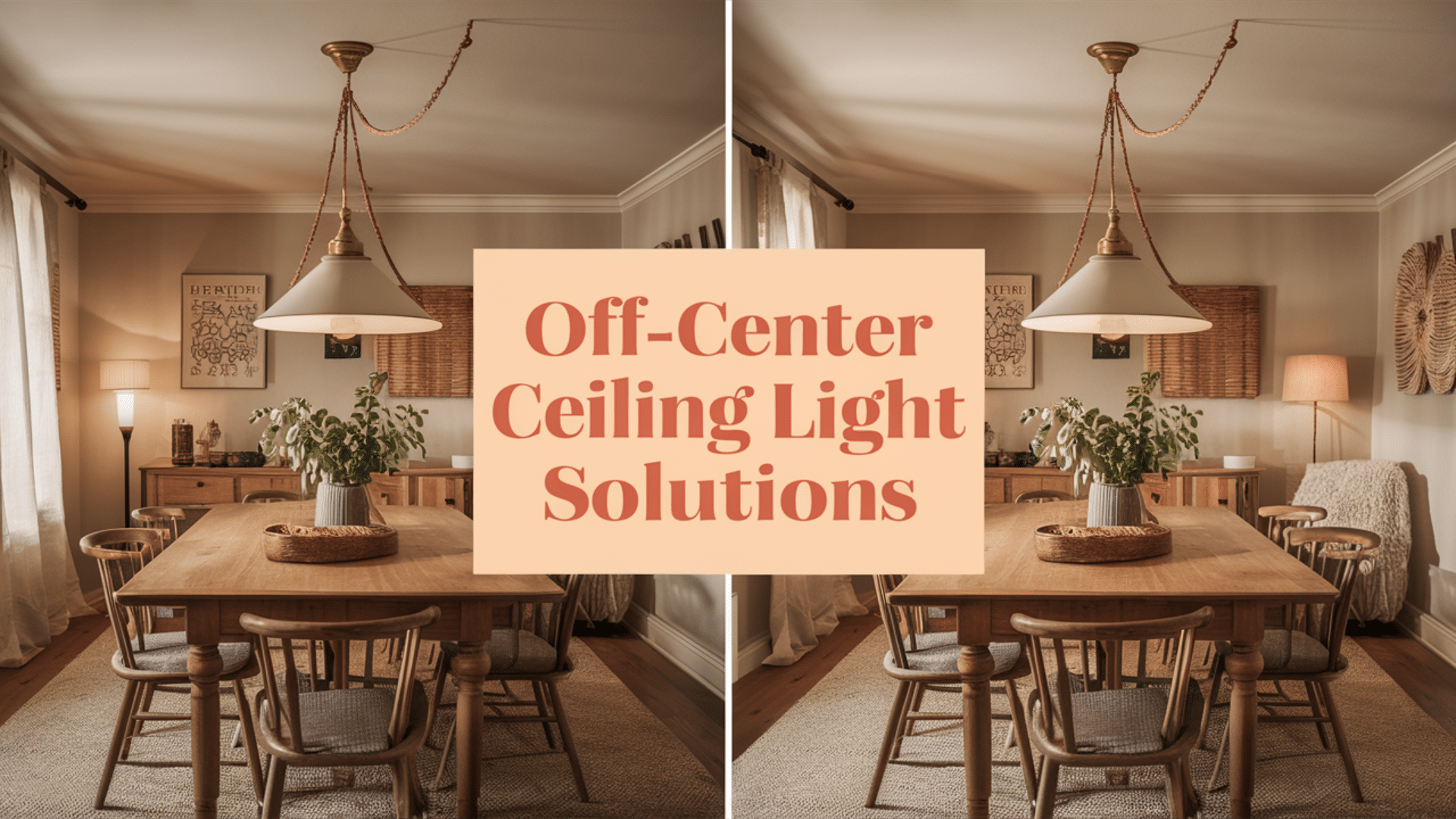You walk into your dining room, and there it is again. That ceiling light just refuses to line up with your table. It’s off by a good foot, maybe more. And every time you see it, it bugs you.
I get it. It’s one of those little things that don’t seem like a big deal—until it starts to drive you nuts. A light that’s not centered can make your whole room feel off.
But here’s the good news. You don’t need to tear into your ceiling or call an electrician. You also don’t need a huge budget. There are smart, simple ways to fix it—or at least hide it.
In this guide, I’m sharing practical ways to deal with an off-center light. Some are fast fixes you can do in an afternoon. Others take a little more work but can really change the look of your space.
No matter your budget or your level of DIY skill, there’s something here that’ll work for you. These ideas are renter-friendly, budget-friendly, and most of all, stress-free.
I’ve dealt with plenty of off-center lights. In my own home. In other people’s homes. And every time, there’s been a solution that made the room feel right again.
Let’s make that light work with your room—not against it.
Why Off-Center Ceiling Lights Are So Common
Ever wondered why so many homes have lights that aren’t centered? You’re not alone. This problem shows up everywhere, from old apartments to brand new houses.
In older homes, lights were often placed where they made sense for the original floor plan.
When walls came down or rooms were repurposed, those fixtures stayed put. The wiring is already there, and moving electrical boxes isn’t a simple DIY job.
In newer construction, lights sometimes get installed before the final furniture layout is decided.
Builders typically center fixtures in the architectural space, not where your furniture will actually go.
Other times, it’s just a mistake that nobody caught until after the drywall went up. By then, it’s expensive to fix, so it stays that way.
The good news? You have options that don’t involve major construction or rewiring. Let’s look at seven smart solutions.
Off-Centre Light Solutions
You don’t always need to move the electrical box to fix a crooked light. Sometimes, you just need to get creative with how you hang, cover, or frame it.
Pick the one that fits your space, your budget, and what you’re allowed to do. Let’s find the fix that works for you.
1. Use a Swag Hook to Move the Light Where You Want It
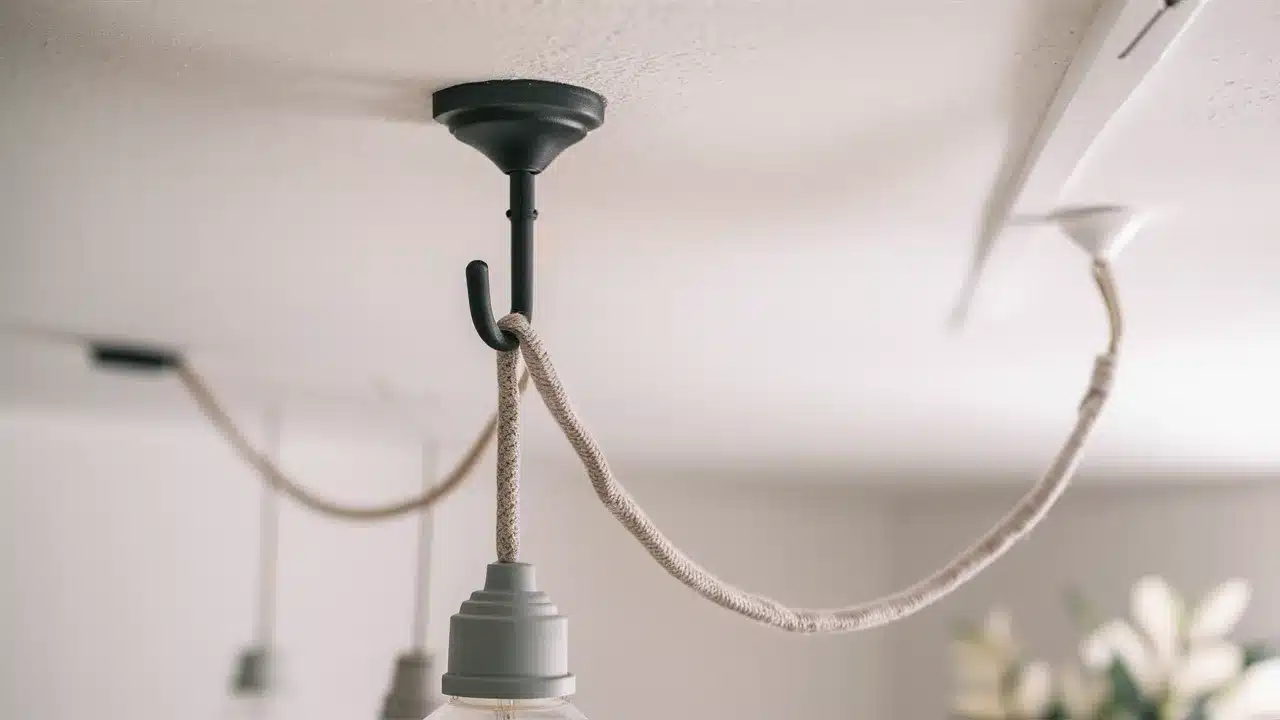
This is one of the easiest ways to fix an off-center light. A swag hook lets you move your light without touching the wiring. You just hang the cord or chain through the hook and guide it where you want it to go.
All you need is a hook, a screwdriver, and a few minutes. Hooks cost very little and can be found at any hardware store. Some even use a sticky adhesive if you can’t drill holes.
It works great over tables, islands, or beds. And if you move things later, the hook can move too. No damage, no stress.
2. Use a Ceiling Medallion to Cover the Problem
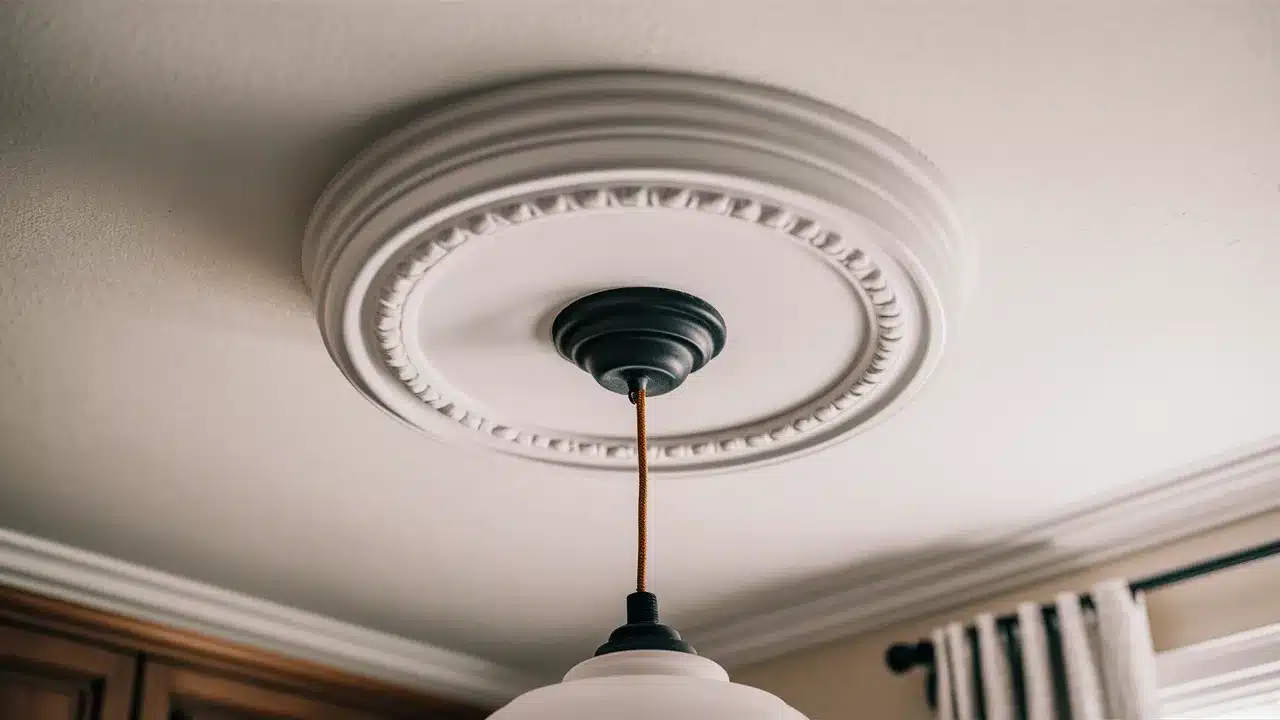
A ceiling medallion is a round piece that goes around the base of a light. It draws attention away from the actual wiring spot and toward the center of the medallion.
You can place it where you want the light to look centered. Then, mount your light just off to the side, within the medallion.
It works best if your light is only a little off—maybe 6 to 12 inches. Medallions are available in all kinds of styles and sizes.
They’re easy to install with glue and screws. It also hides small ceiling marks or patches.
3. Add Chain or Cord to Shift the Fixture
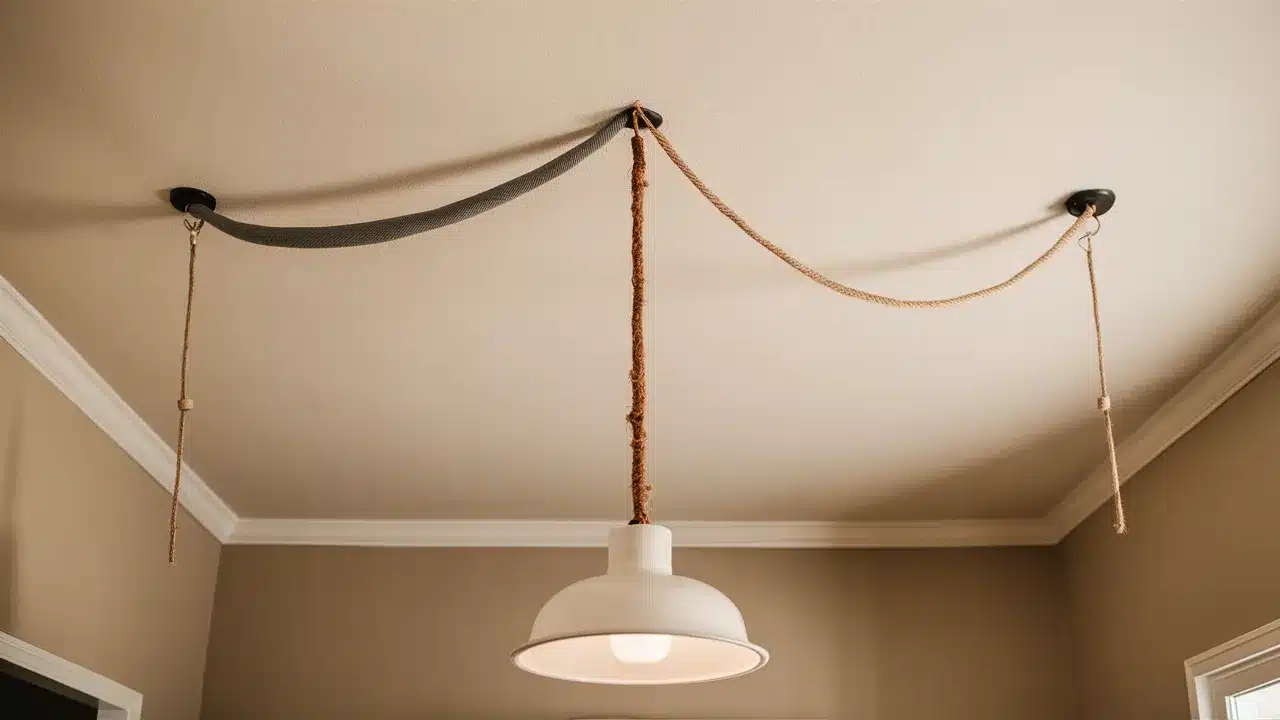
If your light hangs from a cord or chain, this fix is simple. Just add a little more length and let it hang in the right spot. No extra tools or big changes are needed.
You can buy an extra chain at a hardware store. Some lights use cords that can also be extended. You can even find cool cords in different colors or wrapped in rope.
Let the cord run across the ceiling and drop down where you want it. It creates a bold look that works great in dining rooms or bedrooms. And it’s easy to undo later.
4. Move the Room Around the Light Instead
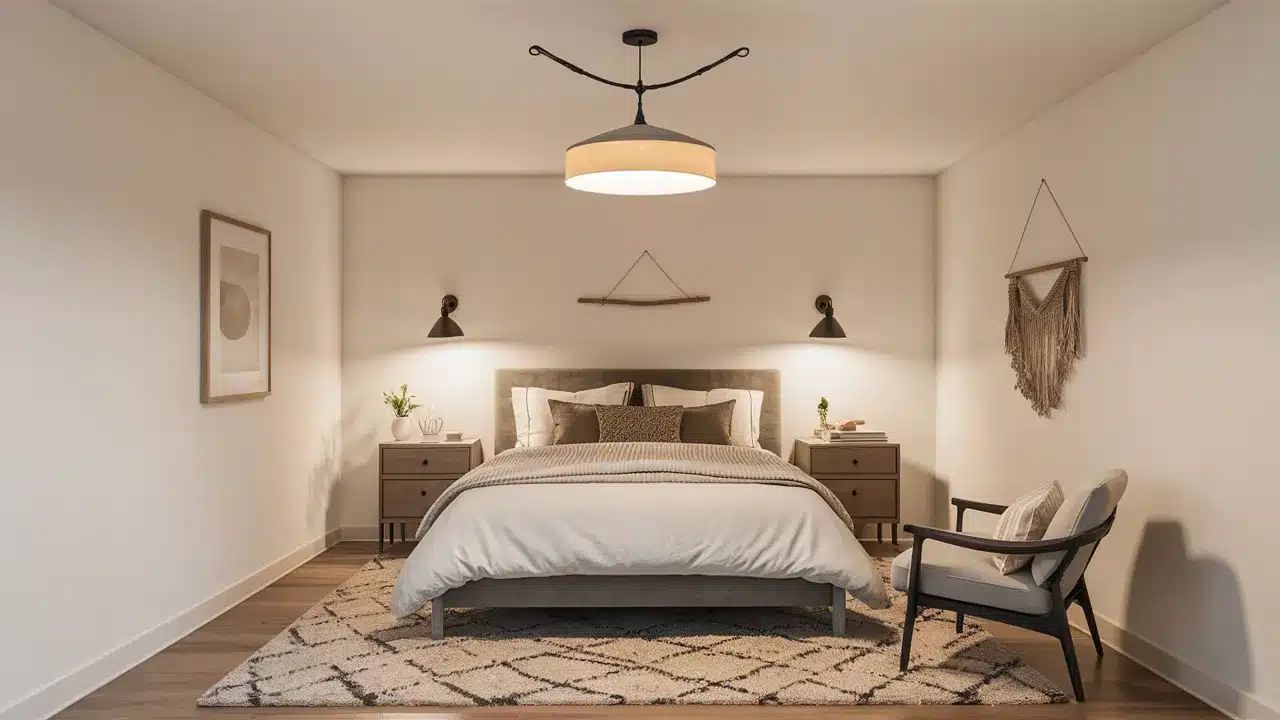
Sometimes, the easiest fix is to work with what you have. Instead of fighting the off-center light, shift your furniture to match it.
Try placing your table, bed, or main seating under the light. Then, arrange everything else around it.
Use a rug to help ground the new layout. Add art or decor to balance the space.
You might find the new setup feels better than your old one. It could even help with how people move through the room.
This works best in spaces where things can shift easily. And it doesn’t cost a thing.
5. Add Other Lights So It Blends In
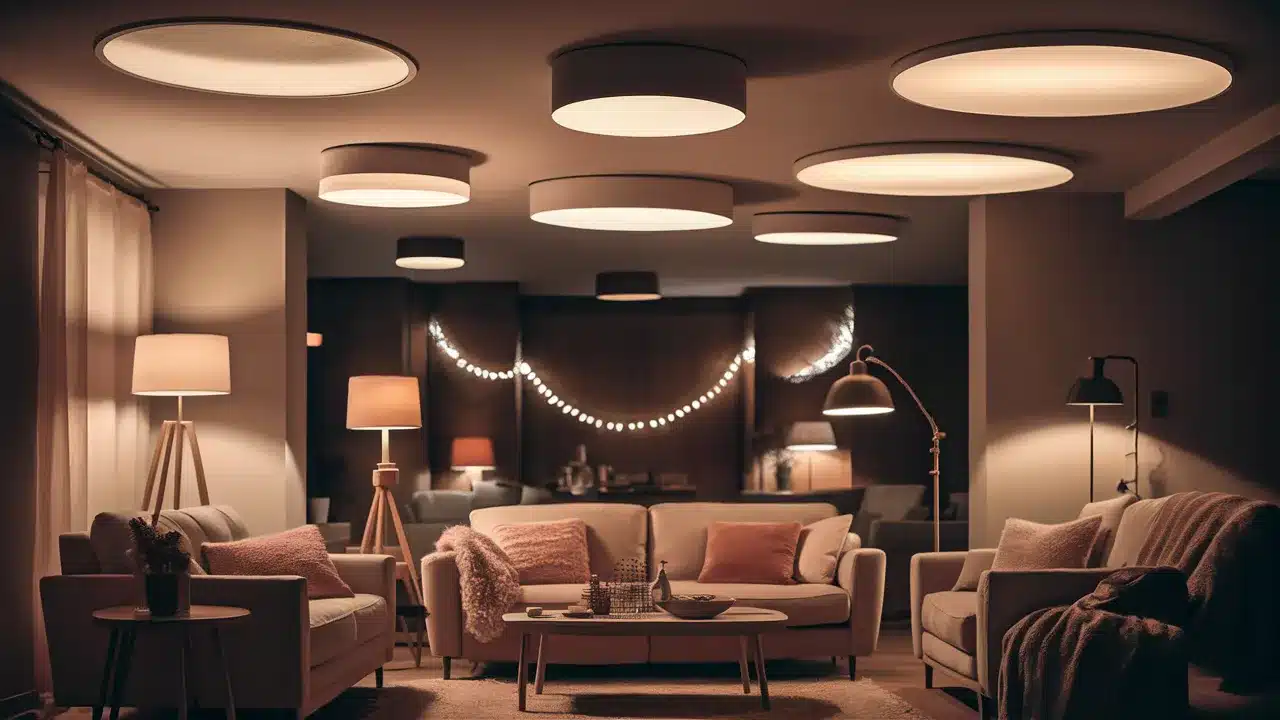
If the ceiling light stands out too much, add more lights around the room. The goal is to make the ceiling light feel less important.
Use floor lamps by chairs or couches. Put table lamps on end tables or shelves. If you can, try string lights or even wall lights.
When a room has more light sources, it feels cozier. It also looks more balanced.
Lamps are easy to move and don’t require tools, making them perfect for renters or anyone who avoids electrical work.
Plus, more lighting gives you options. You can go bright for tasks or soft for relaxing.
6. Use Plug-In or Battery Lights Instead
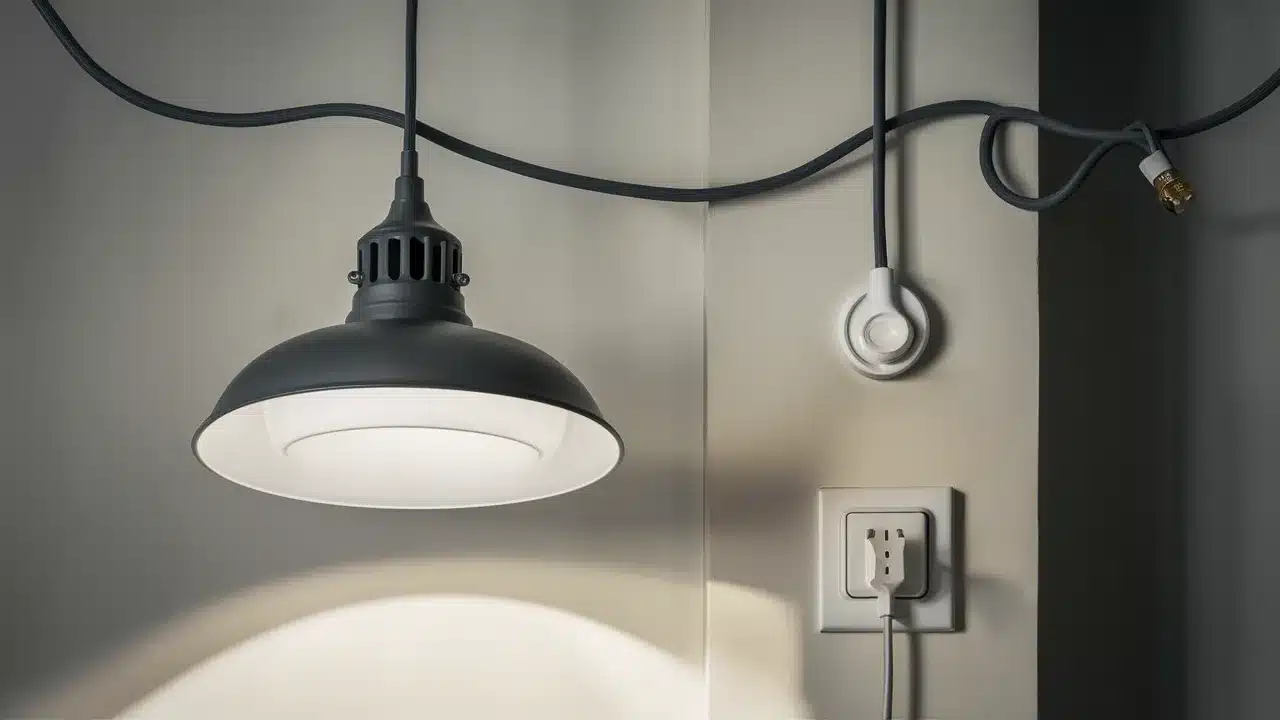
If you can’t mess with wires—or don’t want to—try using lights that plug in or run on batteries.
Plug-in pendant lights hang from the ceiling but connect to a wall outlet. Just hook it where you want, then run the cord down the wall.
To keep things tidy, use a cord cover that blends into the wall. Some are paintable and easy to hide.
Battery lights are even easier. Stick-on lights can go right on the ceiling. Some come with remotes and can get pretty bright.
These are great for renters and super easy to remove later.
7. When It Makes Sense to Call a Pro
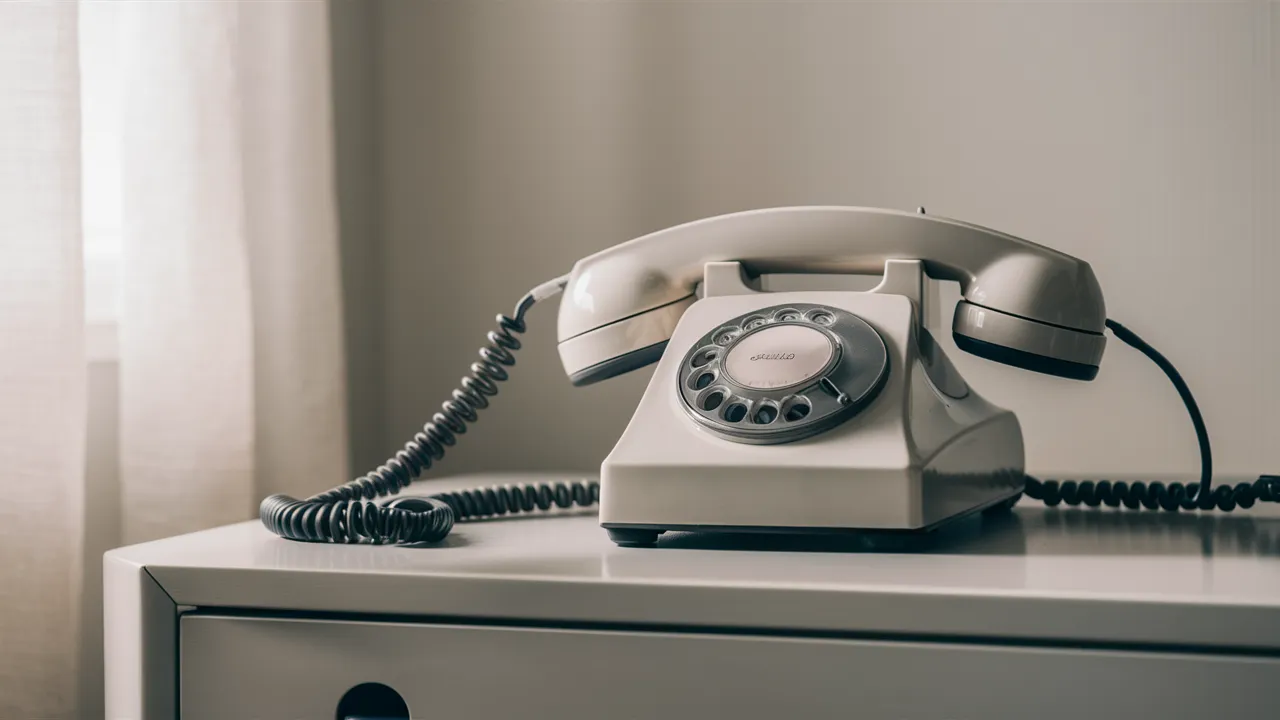
Sometimes, the only real fix is to move the light box for good. This means hiring an electrician to do the job right.
It costs more upfront, but in some cases, it’s worth it. If the light is way off—more than two feet—it might be too far to hide. Or if you’re selling your home, buyers might notice and care.
A pro can move the box in a few hours. They’ll cut a new hole, run the wires, and patch the old one. You’ll have to paint it afterward. But once it’s done, it’s done for good.
Conclusion
Living with an off-center ceiling light doesn’t have to be a daily annoyance. And it definitely doesn’t mean you need to rip open your ceiling or start a full renovation.
As you’ve seen, there are plenty of smart, simple ways to fix or hide that awkward fixture. Some take just a few minutes, and others are weekend projects that give big results.
You can go with a quick fix like a swag hook. Try rearranging your furniture to center around the light. Or layer in other lighting to shift the focus. If you’re ready for a more lasting change, calling in a pro might be the right move.
The key is to find the solution that works for you. Think about your space, your budget, and if you rent or own. Some options are perfect for temporary living situations. Others are better if you’re settled in for the long haul.
Good design doesn’t mean making everything perfect. It means making the most of what you’ve got. Sometimes, those little quirks—like an off-center light—make a space feel more personal and lived-in.
Don’t feel stuck just because something feels off. You’ve got real, doable choices now. Take what works and leave the rest.
Once that light starts working with your room instead of against it, the whole space will feel better—brighter and more balanced.
And most of all, more like your home.

